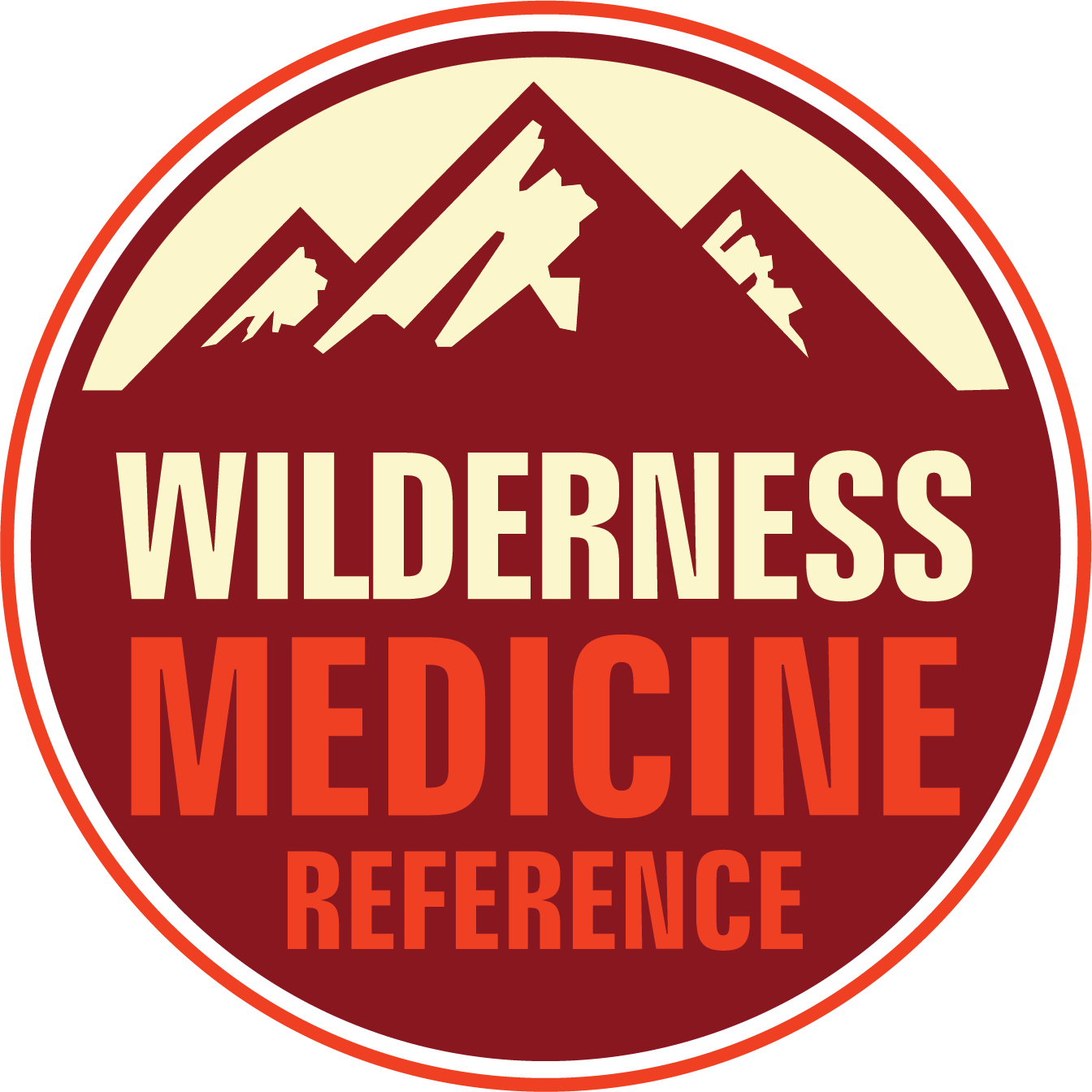Anaphylaxis in the Wilderness
WildMedEtrier Summaries
Excerpted from the most recent Wilderness Medical Society clinical guidelines release¹; with additional content from the World Allergy Organization
“You can’t go wrong giving epinephrine in this situation, but you can definitely go wrong not giving epinephrine.” (Advice to a young EMT named kl from a physician on a call — in regarding a pediatric patient with generalized hives but no other signs of systemic involvement and unreliable history from parents.)
Once anaphylaxis is diagnosed, epinephrine should be administered as the first line treatment. Delays while waiting for further symptom development or administration of antihistamine are proven to cause deaths in the field. Epinephrine mitigates the overall inflammatory response, reverses airway constriction, and reverses dilation of blood vessels. In severe cases of anaphylaxis up to 1/3 of the intravascular fluid may extravasate in minutes. (Hypotension occurs in 25% of cases)²
Antihistamines dilate the blood vessels and could paradoxically worsen hypotension.³ In wilderness medicine courses through the primary companies (Wilderness Medicine Education Collaborative; WMEC; (https://www.wildmededucationcollaborative.org/) antihistamines are taught to be given after epi; often both H1 and H2 blockers (Benadryl and Pepcid) to stop the release of Histamine. Benadryl is often given at 2x normal dosage.
If an antihistamine is taken by the patient prior to your arrival, the skin signs (meaning generalized hives) may have disappeared when the systemic reaction is still occurring. Antihistamines only affect skin signs but not vascular dilation or airway constriction. This could influence a physical assessment, falsely misleading to a determination the vasodilation is adequately treated.
All good now on the right?
WFR’s are generally taught to give IM epinephrine with “2 systems involvement” as shown in the chart below. While urticaria is rarely representative of a true systemic involvement, the calculus is that it is hard to get inexperienced providers to give epi when they should and they often hesitate and wait too long, so urticaria is put on as a systemic response as it is present in 80–90% of anaphylaxis reactions. Delayed administration of epinephrine is a risk factor for a biphasic rxn.⁴
Epinephrine Treatment Myths:
Inhaled Epi (think Bronchial Mist) as treatment substitute. This will not do the job; a vial of 1:1000 Epi should be on hand and allows multiple doses.
The other adage Flavio and Johnson et. al felt strongly about was the idea that Epi only works for 10 minutes and only treats symptoms of a reaction to buy time for antihistamines to work. This is a fallacy; while epinephrine is metabolized quickly, it’s biological effects of stabilizing Mast cells (which is what antihistamines do) can last for a couple hours. If you only have epi, you can still have a successful treatment.
The general wilderness treatment is to give epinephrine every 5–15 minutes until signs of true systemic involvement decrease. (The hives won’t go away with epinephrine treatment, only after time following oral treatment with antihistamines.)
When faced with evacuation decisions as well as what to put in your kit; there are some considerations to think about:
8–12 % of anaphylaxis reactions require 2 or more doses of epinephrine. Only 1% are completely treatment resistant to 3 doses IM Epi.
Biphasic reactions (2nd reactions occurring up to 24 hours later, but usually within 4–6 hours) occur 4–6% of the time. There is increased risk of biphasic reaction when:
There was a delayed onset of allergic/anaphylaxis reaction.
There was a delay in the administration of epinephrine.
More than one dose of epi was required for treatment.
The antigen (trigger substance) was unknown.
There was multiple organ system involvement.
Observation recommendations post successful treatment to clear biphasic risk:
6–8 hours if there was respiratory compromise.
12–24 hours if hypotension involved.
It is a myth that severe allergic reactions do not happen if no prior reaction history to the substance has occurred. Additionally, prior reactions do not necessarily indicate what will happen with a current exposure.
And lastly, according to the World Allergy Organization, exercise-induced anaphylaxis can occur, or even food-dependent exercise-induced anaphylaxis (FDEIA) in which anaphylaxis develops only if physical activity occurs within a few hours after eating a specific food, but not just by eating that food itself. This is a real thing, and what it means is you cannot give the author (kl) food spiced with “Spike” food seasoning and offer to “just go take a lap on Ivan 2” at Breckenridge…😉
Thanks for reading!
kl
References:
1-4. Flavio G MD, Johnson D MD, et al; Wilderness Medical Society Clinical Practice Guideline on Anaphylaxis. 02 February 2022. https://doi.org/10.1016/j.wem.2021.11.009




